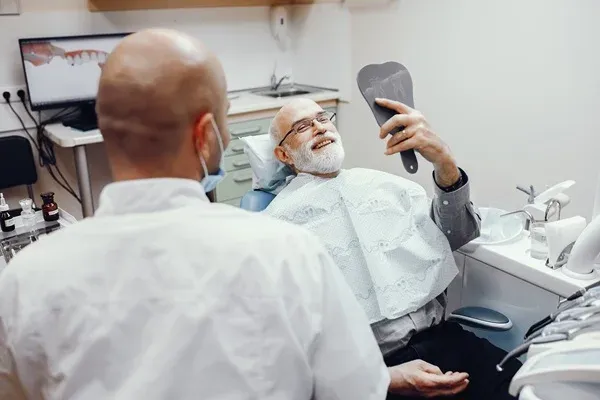Managing Potential Complications in Surgical Orthodontics
Dr. Hoss Abar
Addressing Risks and Challenges
In surgical orthodontics, while the outcomes are often highly beneficial, there are several common complications that practitioners need to be aware of and manage effectively. These complications can arise at different stages of the treatment, from preoperative planning to postoperative recovery. Understanding these potential issues is essential for minimizing risks and improving patient outcomes.
Understanding the Common Complications
- Infection: Like in any other surgery, the possibility of infection is always a major issue of concern. This risk can be minimized through correct sterilization, the use of antibiotics before surgery, and proper surgery execution.
- Nerve Damage: Operations in the region of the jaws are potentially hazardous to nerves, especially the inferior alveolar nerve. This can cause temporary or, occasionally, even long-lasting loss of feeling or changes in the lips, chin, or tongue.
- Poor Bone Healing: Nonunion or delayed bone union may be observed, especially in cases of osteoporosis or in patients who smoke. This can result in longer healing periods or the requirement for further operations.
- Relapse: There are possibilities of post-surgical relapse where the jaw returns to the initial position. This risk can be managed by following the correct surgical procedure, having adequate fixation, and strictly adhering to postoperative instructions by the patient.
- Soft Tissue Complications: Some of the complications that may occur in soft tissues include edema, fibrosis, and tissue death. These can affect the final esthetic result and may need additional management.
- Occlusal Issues: Patients may have problems with bites after surgery and may require further orthodontic treatment to correct the problem.
As a result, practitioners can improve surgical orthodontic outcomes and the patient’s satisfaction level by knowing these frequent complications and how to avoid or address them.
Postoperative Care and Monitoring
The management of the patient following surgery, and the observation of the patient are important factors in surgical orthodontics. Management during the recovery phase also plays an important role in the outcome of the condition and preventing complications. Here are key aspects to focus on in postoperative care and monitoring:
Immediate Postoperative Care
The patient should be taken to a recovery area where he or she should be closely observed for at least an hour after surgery, during which time the patient’s blood pressure, pulse rate, and oxygen levels should be taken. Particular concern should be paid to airway maintenance, especially when the patient has undergone some extensive jaw surgery.
Pain Management
Pain management is critical to the comfort and healing of the patient. During the treatment, the medication plan should be changed according to the patient’s requirements with a focus on the reduction of opioid usage.

Swelling and Bruising
Inflammation is a normal reaction to surgery, and it is at its worst within the second or third day after the surgery. This can be managed using ice packs, head elevation, and prescribed anti-inflammatory drugs. It is important for the patients to be told that it is normal to have some bruising and swelling, which will reduce with time.
Infection Prevention
To avoid such infections, doctors usually prescribe antibiotics to patients. They should also be instructed on the correct way of cleaning their mouth, especially by gentle rinsing and use of mouthwash as prescribed by the doctor. This is because any sign of infection, for instance, increased pain, swelling, or fever, should be reported by the patient, and close monitoring is encouraged.
Diet and Nutrition
It is often advised that the patient should take soft or liquid foods within the first few days after the surgery to prevent stress in the operated area. Supplementary feeding might be required to feed the patient the required number of calories and nutrients for recovery. It is recommended that solid foods be gradually introduced as the patient regains his or her health.
Monitoring for Complications
Later check-ups are crucial to observe the extent of the healing process in the patient. The surgery area should be assessed for infection, slow wound healing, or abnormal positioning of the bones. X-rays may be employed to evaluate the status of the fractured bone, and the integrity of any implants applied in the operation.
Addressing Nerve Sensations
Temporary loss of sensation or tingling in the lower lip or chin may be experienced after the surgery due to nerve injury. Patients should be advised that such sensations are usually temporary and should subside with time, but they should seek the surgeon’s attention if the symptoms persist or worsen.
Physical Activity Restrictions
The patient should be instructed to avoid any form of activity that may cause exertion, lifting heavy objects, or any action that may exert pressure on the operated area. As much as this is true, the patient should consult the surgeon on the extent of normalcy to be practiced as they heal.
Orthodontic Follow-Up
This means there should be a close working relationship with the orthodontist to continue the orthodontic treatment plan after surgery. Some changes may be required when the patient is healing, and the orthodontist will have a significant responsibility to oversee the position of the teeth and jaw.
Long-Term Monitoring and Maintenance
It is also necessary to follow up with the patient in the long term to make sure that the results of the surgery are still good and that the patient is adjusting well. This includes screening for signs of relapse and ensuring any occlusal problem is detected early. Regular follow-up of the patient by the surgeon and the orthodontist is important to sustain the gains made from the surgery.

In this way, healthcare providers can improve the quality and speed of the recovery process, reduce the risks of complications, and provide long-term successful outcomes of surgical orthodontic interventions.
Contact your Pinole dentist, Dr. Hoss Abar, DDS, MSD at Abar Orthodontics, to learn more about managing potential complications in surgical orthodontics.
Resource:
Five Types of Orthodontic Emergencies.
*This media/content or any other on this website does not prescribe, recommend, or prevent any treatment or procedure. Therefore, we highly suggest that you get the advice of a qualified dentist or other medical practitioners regarding your specific dental condition.*
More To Explore
About Us
We believe that every patient deserves to feel confident about their smile. Years of experience creating beautiful and flawless smiles.
Opening Hours:
Monday - Thursday: 8:00 AM - 5:00 PM
Friday: 8:00 AM - 12:00 PM
Saturday - Sunday: Closed
Abar Orthodontics, Pinole, CA
1500 Tara Hills Drive., Suite 204
Pinole, CA 94564
Abar Orthodontics, San Leandro, CA
145 East 14th street., #100
San Leandro, CA 94577
© 2025Abar Orthodontics | All rights reserved | Powered by:Vigorant, Inc.
